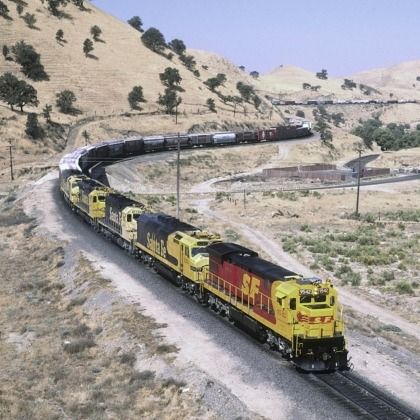If you’ve ever been wakened by the roar of a freight train – or waited at a level crossing for one to trundle by – you’ll be glad to know that these noisy vehicles have a new and potentially life-saving purpose: predicting earthquakes. As Hamish Johnston explains on this week’s podcast, freight trains generate surprisingly strong seismic waves, and changes in the velocity of these waves is an early sign of hazardous earthquake activity. Researchers in France, Belgium and the US studied the rumblings of freight trains running through California’s Coachella Valley and found that they could, in principle, be used to monitor the nearby San Jacinto fault.
Next on the podcast is Chris Monroe, an atomic physicist and quantum technologist whose start-up firm, Ion Q, is developing a quantum computer that uses trapped ions as qubits. In an interview with Physics World’s industry editor Margaret Harris, Monroe explains how Ion Q’s technology differs from classical computers, and describes how trapped ions execute quantum gates.
The third segment of the podcast focuses on the persistent lack of diversity in physics. In an interview, Jess Wade, a physicist at Imperial College London, discusses the scientific impact of this poor diversity and suggests ways to make the field more welcoming to members of underrepresented groups. Afterwards, our features editor Sarah Tesh, who commissioned Wade and Maryam Zarainghalam to write about this topic in the August issue of Physics World, talks about the portraits of white male scientists that adorn walls in many physics departments. These so-called “dude walls” honour important historical figures, but they also send out subtle signals about what a “great” physicist looks like.
